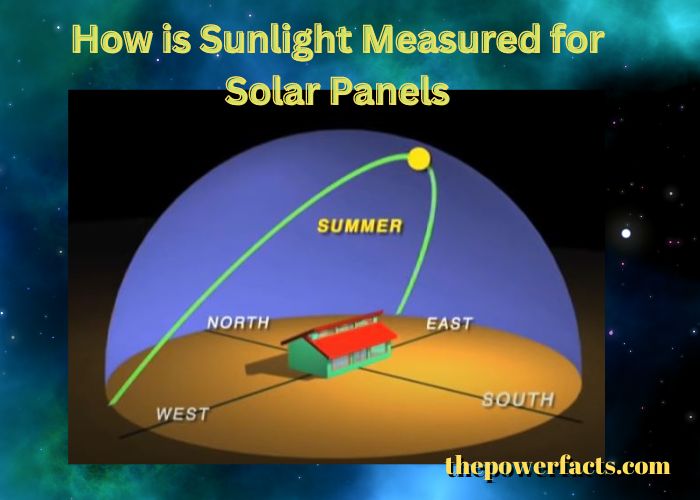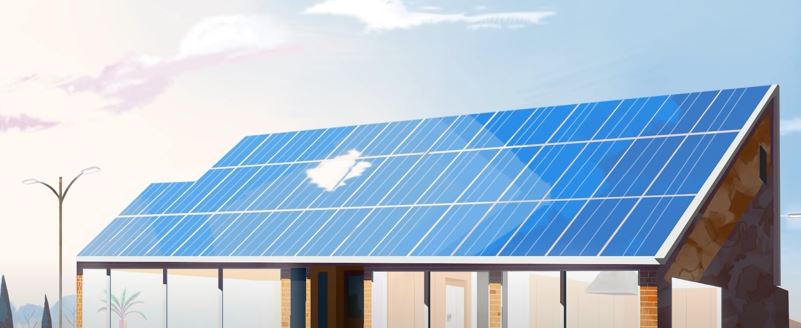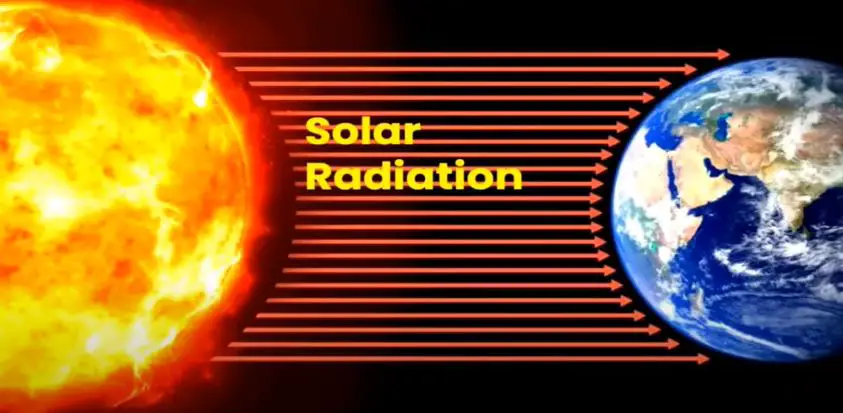How is sunlight measured for solar panels? This is done by using a device called a pyranometer. A pyranometer is a type of sensor that measures the amount of sunlight that hits a given surface.
It is typically used to measure the amount of solar radiation received by a solar panel.

There are a few different ways to measure sunlight for solar panels. One way is to use a pyranometer, which is a device that measures the amount of sunlight that hits a given surface. Pyranometers are placed in the sun and take readings at regular intervals, usually every few minutes. For the best output you have to find What Side of House is Best for Solar Panels.
Another way to measure sunlight is with a solarimeter, which measures the intensity of sunlight. Solarimeters are placed in the sun and take readings at regular intervals, usually every few minutes. A third way to measure sunlight is with a photovoltaic cell, which converts sunlight into electricity.
Photovoltaic cells are placed in the sun and generate electricity when exposed to light.
How Can Sunlight Be Measured?
There are a few different ways to measure sunlight.
| First way | To use a light meter, which is a device that measures the amount of light in a given area. |
| Second way | To use a solarimeter, which measures the amount of sunlight reaching a given point. |
| Third way | You can also use photography to measure sunlight. |
How Many Hours of Sunlight is Needed for Solar Panels?

How many hours of sunlight is needed for solar panels? Solar panels need a minimum of four hours of direct sunlight per day to work efficiently. However, more sun is better, and panels will produce more electricity if they receive six or more hours of direct sunlight each day. You need to know about rainy season for install solar panel.
Solar Irradiance Measurement
Solar irradiance is the power per unit area received from the sun in the form of electromagnetic radiation in the visible and near-infrared spectrum. It is measured in watts per square meter (W/m2) and its value varies throughout the day and across seasons. Irradiance is a key parameter for characterizing solar energy potential, as it directly affects the amount of power that can be generated from photovoltaic (PV) devices.
High irradiance levels are needed for PV systems to produce electricity at their maximum efficiency, but too much irradiance can also lead to overheating and damage to PV cells. There are several methods for measuring solar irradiance, including ground-based measurements with pyranometers or heliostats, satellite-based measurements, and airborne measurements using aircraft or drones. Each method has its own advantages and disadvantages, so it is important to choose the right measurement technique for the specific application.
Ground-based measurements are typically the most accurate but can be affected by factors such as cloud cover, air pollution, and terrain features. Satellite-based measurements offer global coverage but have lower accuracy due to atmospheric effects. Airborne measurements provide high accuracy but are more expensive than other methods.
No matter which method is used, it is important to calibrate instruments regularly to ensure accurate readings. Solar irradiance data is essential for planning and operating PV systems, as well as for research purposes such as studying climate change or developing new solar technologies.
Sun Hours Calculator for Solar Panels
If you’re considering solar panels for your home, one of the first things you’ll need to know is how many sun hours per day your location gets. This information will help determine the size and productivity of the solar panel array you’ll need to power your home.
There are a few different ways to calculate sun hours.
The first is by using a sunshine recorder, which is a device that measures the amount of sunlight that hits it over the course of a day. You can also use an online sun hour calculator, like the one provided by Solar United Neighbors.
To use the calculator, simply enter your zip code and select your state.
The calculator will then provide you with average daily sun hours for your location. Keep in mind that these figures are averages, so there will be days when you get more sun hours and days when you get less.
Once you have an idea of how many sun hours per day your location gets, you can start shopping for solar panels!
Sunlight Intensity on Earth

Sunlight intensity on Earth can vary depending on a number of factors, including the time of day, the season, and the location. The amount of sunlight that reaches Earth’s surface also affects how much heat is generated and how much photosynthesis can occur.
The highest levels of sunlight intensity are typically found near the equator, where the sun is directly overhead for longer periods of time each day.
However, even at the equator, there are still variations in sunlight intensity depending on the time of year. For example, sunlight intensity will be higher during the summer months when the days are longest than it will be during winter months when the days are shorter.
At lower latitudes away from the equator, sunlight intensity varies more significantly due to both changes in day length and angle of incidence (i.e., how direct or indirect sunlight is).
For example, places located closer to Earth’s poles experience longer winters with less direct sunlight than places located closer to the equator. As a result, plants in these areas may become dormant during winter months since they’re not able to photosynthesize as efficiently.
Overall, understanding how sunlight intensity varies across Earth can help us better understand plant growth patterns and optimize agricultural practices accordingly.
Peak Sun Hours
Peak sun hours are the hours during the day when the sun is at its highest point in the sky. These hours vary depending on your location and time of year. In general, peak sun hours occur between 10am and 4pm.
During peak sun hours, the sun’s rays are strongest and can do the most damage to your skin. It’s important to take precautions during these times, such as wearing sunscreen and sunglasses. You should also avoid being outside for too long if possible.
If you must be outside during peak sun hours, make sure to stay hydrated and take breaks in shady areas as needed. By taking these precautions, you can help protect yourself from harmful UV rays and enjoy your time outdoors safely!
Measure Solar Potential
If you’re considering installing solar panels, one of the first things you need to do is measure your solar potential. This will help you determine how much energy you can generate and how many panels you’ll need.
There are a few different ways to measure your solar potential.
One is to use a solar calculator. These are available online and can give you a good estimate of your potential.
Another way to measure your solar potential is to use a sunlight meter.
This device measures the amount of sunlight that hits a particular spot over the course of a day or year. You can then use this information to calculate your potential energy output.
Finally, you can also contact your local utility company for more specific information about your area’s solar potential.
They may have data that can help you more accurately estimate your output.
No matter which method you use, measuring your solar potential is an important first step in determining whether or not solar power is right for you.
How to Measure Sunlight for Plants
If you’re a gardener, chances are you’ve had the experience of moving a plant to a new location, only to have it wilt and die despite your best efforts. Many times, the problem is simply that the plant wasn’t getting enough sunlight. But how can you tell if a spot in your garden gets enough sun?
Here’s a quick guide to help you measure sunlight for plants.
The first thing you’ll need is a sunny day! If possible, choose a day with little or no cloud cover.
Once you’ve found your sunny spot, place a light meter or Lux meter in the area where you want to measure the light. Be sure to position the sensor at about the same height as the leaves of the plant you’re interested in growing.
If you don’t have access to a light meter, there are other ways to estimate sunlight levels.
One method is to hold your hand up in the air above the desired planting spot. If your shadow is shorter than your height, that spot probably receives full sun; if your shadow is taller than you are, it likely receives partial sun or shade; and if you can’t see your shadow at all, it probably means that area gets full sun for most of the day.
Keep in mind that different plants have different sunlight requirements.
For example, many succulents and cacti need full sun (6-8 hours per day), while ferns prefer partial shade (2-4 hours of direct sunlight per day). Once you’ve determined how much sun an area gets, match it up with plants that will thrive in those conditions. With just a little bit of planning, you can ensure that your plants get exactly what they need to grow strong and healthy!
Sun Hours Per Day by Zip Code
As the days get shorter and winter approaches, many of us start to feel the effects of seasonal affective disorder (SAD). One of the main symptoms of SAD is a decrease in energy levels, which can be caused by a lack of sunlight. If you live in an area with long winters and little sun, you may want to consider moving to a sunnier climate.
But how do you know how much sun your new location will get? There are a few ways to find out, but one of the simplest is to look up the average number of hours of sunshine per day by zip code. This information is readily available online from sites like Weather.com and The Weather Channel.
Just enter your zip code into the search bar and you’ll see a chart that shows the average number of sunny hours per day for each month. You can also find detailed information about sunrise and sunset times, as well as cloud cover data. With this information in hand, you can make an informed decision about whether or not a move to a sunnier location is right for you.
Solar Radiation W/M2

Solar radiation is one of the most important factors in climate change. It is the energy from the sun that drives the Earth’s weather and climate. The amount of solar radiation that reaches the Earth’s surface varies depending on a number of factors, including the time of day, season, latitude, cloud cover, and atmospheric conditions. You also need to know about solar storm.
The Amount of Solar Radiation
The amount of solar radiation that reaches the ground is typically expressed in watts per square meter (W/m2). This value can vary widely depending on location and time of year. For example, at noon on a clear summer day near the equator, the direct solar radiation can be as high as 1,000 W/m2.
During an Overcast Winter Day at High Latitudes
However, during an overcast winter day at high latitudes, this value can drop to near zero. While 1 W/m2 may not seem like much, it is actually enough to power a 100-watt light bulb for about 10 minutes. But if all that energy were concentrated into a smaller area—say one square meter—it could cause serious burns or start a fire.
Causing Many Forest Fires
In fact, solar radiation is responsible for causing many forest fires each year. So how does this relate to climate change? The sun is the ultimate source of energy for our planet and its changing output has a direct effect on Earth’s climate.
Solar Activity
Solar activity goes through cycles lasting 11 years on average. During periods of high activity (known as solar maxima), there are more sunspots and eruptions on the sun’s surface which release more electromagnetic radiation into space. This increased output leads to warmer temperatures on Earth.
During Times of Low Activity
Conversely, during times of low activity (solar minima), there is less sunspot activity and fewer eruptions resulting in cooler temperatures. Over long time periods these natural fluctuations in solar output can have large effects on Earth’s climate. For example, scientists believe that changes in solar activity were responsible for triggering both the Little Ice Age and Medieval Warm Period.
Responsible for Global Cooling Trends
More recently, some scientists have suggested that decreased solar activity may be partly responsible for global cooling trends since 1980. While changes in total solar irradiance are thought to be responsible for long-term climate changes, variations in UV light may also play a role in short-term temperature changes. UV light makes up only a small fraction (about 10%) of total sunlight but it packs a powerful punch when it comes to heating things up. When UV rays hit molecules in the atmosphere they break apart creating heat.
Conclusion
The amount of sunlight that hits a solar panel is measured in two ways: the intensity of the sunlight and the number of hours it shines each day. The intensity, or brightness, of sunlight is measured in watts per square meter (W/m2). The average intensity of sunlight reaching the Earth’s surface is about 1,000 W/m2.
But the amount of sunlight that actually falls on a solar panel can be much less than this because of shading from trees or buildings, or because the panel is not pointed directly at the Sun. The other way to measure how much sunlight hits a solar panel is by looking at how many hours each day the Sun shines on it. This is called “insolation” and is usually expressed in “hours per day.”
The average insolation in the United States is 4-5 hours per day. But again, this can be less if there are clouds in the sky or if the solar panel is not pointing directly at the Sun.
Read more: